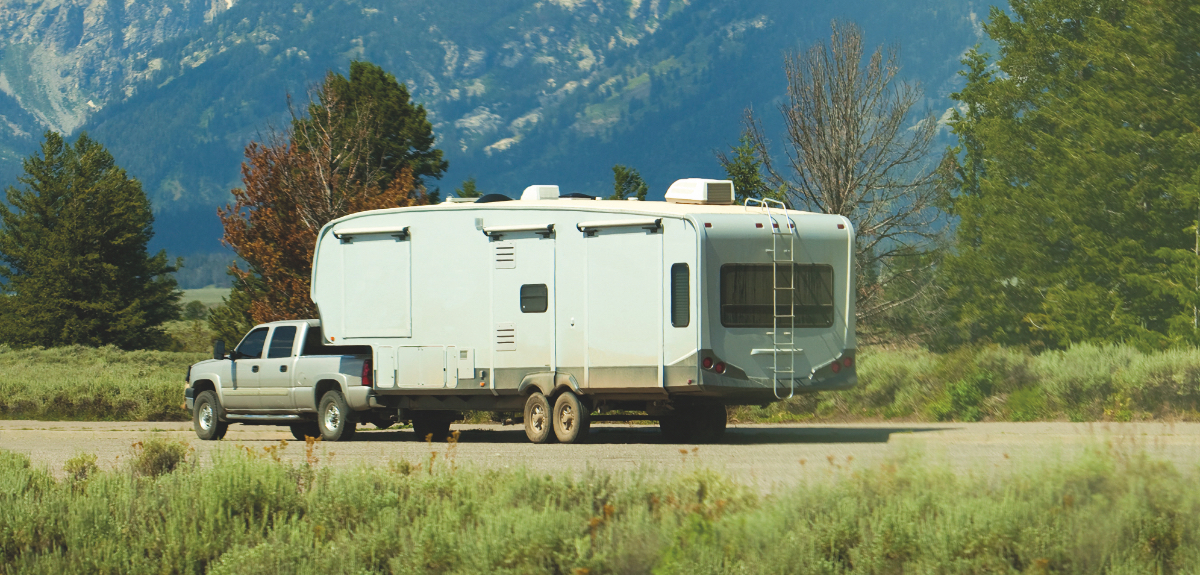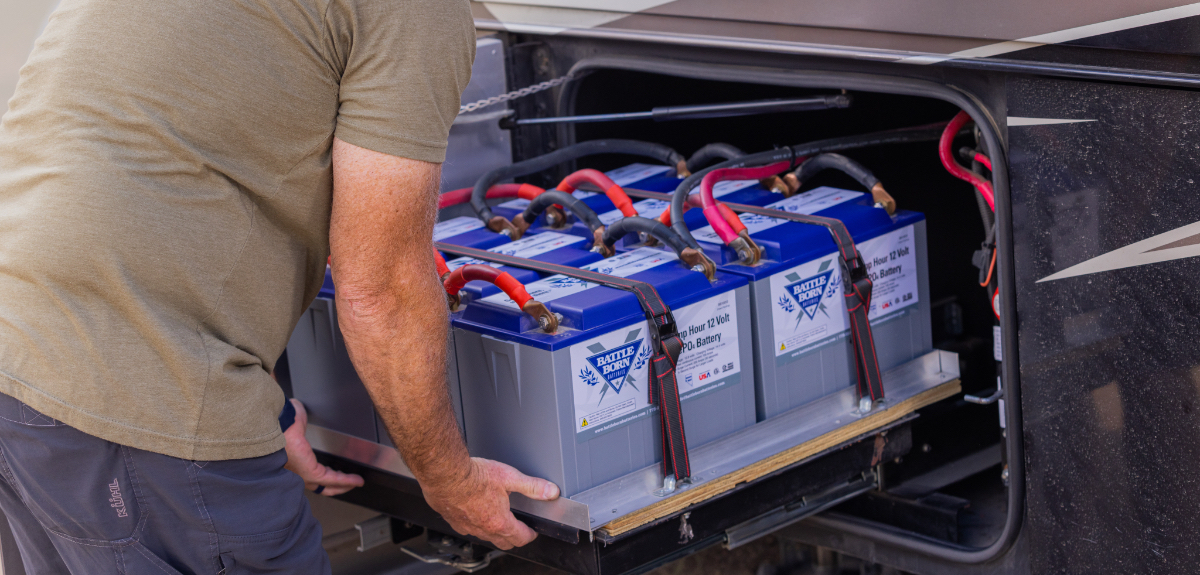Tech Q&A – October 2022
How Long DEF Lasts, Improving the Locks on an RV, Blinking Headlights, a Creeping Slide-Out, and Some Reader Insight
Image Caption:
DEF Lifespan
Q: My motorhome is a 2015 Thor Palazzo 35. It has the Cummins 340-hp engine and Allison transmission. The question I have is about the DEF that has been in my diesel pusher for more than a year. Is the DEF still good, or does it have some sort of shelf life?
—Mike Williams, Straford, Missouri
A: DEF containers typically have an expiration date and buyers should check that at purchase. The lifespan or shelf life of diesel exhaust fluid (DEF) actually varies according to storage conditions. DEF doesn’t include preservatives and can usually be stored for at least one year. DEF shelf life mainly depends upon storage temperature. DEF is best stored between 12º–86°F. DEF begins to turn slushy at 12°F, can freeze solid, and expands like water when frozen. After it has been frozen, DEF can be thawed and used with no issues. When stored below 65°F in approved containers, shelf life is about two years. Sustained exposure to sunlight or high temperatures can shorten life.
Bad DEF can lead to potential component damage, including the DEF dosing pump and diesel particulate filter. If spoiled DEF causes component damage, the manufacturer’s warranty may be void. DEF is naturally clear. If it appears cloudy or colored or has particles visible, it’s likely contaminated or old. If DEF has gone bad, do not attempt to use it.
Intermittent Headlights
Q: We have a 2018 Thor Miramar 35.2 motorhome with the standard Ford F-53 chassis. Occasionally, when I hit a bump, the headlights will blink off for 5–10 seconds. On some occasions, the lights are off for longer periods. I’ve spent more than $1,000 chasing this short. As a matter of fact, it’s in the shop as I write this. Neither I, nor the RV shop helping me have the confidence that we’ll find it this time. The obvious challenge is that it’s “a short” and it only shows itself at night and only on occasion. We’ve searched the Ford Motor Company electrical schematic. We’ve changed the headlight switch. We’ve replaced the battery cables, and we installed a new battery. Do you have any ideas?
—Stan Jones, via email
A: I hate to hear of shops using the old shotgun approach to problem-solving, just replacing things unnecessarily without testing until either they accidentally stumble upon the solution or the customer runs out of money. If the battery or battery cables were bad, nothing on the chassis electrical system would work, and the engine wouldn’t run.
The headlight assemblies and headlight wiring on your coach were supplied by Thor. I strongly suspect that’s where the problem lies. The headlight circuit is protected by a circuit breaker, which shuts off power briefly if a short to ground occurs. This is very likely occurring between the headlight switch and the headlights, and this is where troubleshooting efforts should be focused. Because it occurs going over bumps, the headlight wiring and connections should be wiggled and pulled on while the headlights are on. This should cause the problem to occur and show the location. I truly think you’ll find a short in the headlight wiring harness.
Also, check ground wires connected to the headlight bulbs, as the bad grounds may be backfeeding voltage to other bulbs. There should be one ground wire at each socket that does not go into the harness, which should terminate under a bolt near the bulb sockets. Clean any corrosion from the wire lug and the bolt.

Better Locksets for RVs?
Q: My wife and I just got back into camping after a five-year hiatus. We have a 2022 Rockwood Roo 235S hybrid travel trailer. I like that a single key will work for every lock on the trailer. However, I was quickly reminded of just how finicky these locks can be. We have 11 locks to deal with, and it can take several minutes to “wiggle” the key just enough to get everything unlocked for setup or lock everything up for travel. I’m not quite as worried about locking storage compartments during travel, but I can’t imagine leaving the foldout beds unlocked and risking them popping open while driving. Are there any tricks to get these locksets to work more reliably, or can you recommend an aftermarket replacement lock that is more reliable?
—Michael Landry, Scarborough, Maine
A: I suggest making an appointment with a good local locksmith to take a look at them. There might be a way to improve or upgrade the locks. You might also check out Bauer Smart Locks or BOLT locks to see if they have something that works for your situation. When locking or unlocking a compartment, for example, it can help to push in against the rubber door seal while turning the key. The bulb seal may provide enough pressure against the lock bar that it seems like it’s stuck until you release the seal pressure. This is a common problem with RV compartments and other key-locked access openings. Please let me know what you end up doing, as we may be able to share it with our readers.
Slide Creeps Out
Q: I have a 2015 Grand Design Solitude ST379FL fifth wheel. The hydraulic kitchen slide creeps out about a couple of inches. I bring it back in, and it goes out again. This can happen every day, or not for a week or two. Could outside temperature cause this to happen?
Also, the roof has developed a putty-like coating and looks terrible. Dicor said that it is a defect in the material. They sent me the material to replace the roof but did not offer to cover or even help with the labor, which my mechanic said will cost about $4,000. Is there anything you can do to help me out?
—Len Hansen, Elephant Butte, New Mexico
A: The fact that your Solitude has five slides and only one creeps out defeats the outside-temperature theory. It’s very likely that either the solenoid valve or the check valve for extending that slide is faulty. You could try swapping these two parts from a slide that works well to confirm this. A simple trick that may help and save some time and money: The HWH (hydraulic equipment supplier) website says to hold the extend or retract button for at least 3 seconds and no more than 10 seconds after the slide stops. That is to make sure that the lines are charged. If they are not charged, the slide may creep.
Regarding the roof issue, that is a consumer issue, not a diagnosis or repair issue. Carefully read the roof warranty and perhaps contact a lawyer, or take it to small claims court if you feel that you are entitled to more.
Refrigerator Problem
Q: We have a 2008 Damon Tuscany Class A motorhome. It has a Norcold two-way 120-volt/propane refrigerator, model 12101M. The propane function works perfectly. However, when I try to switch it over to 120-volt power, it indicates there is no AC power available. I am quite handy and do most of my own repairs. The first thing I did was to open up the outside compartment exposing the back of the refrigerator. I unplugged the fridge and checked the AC outlet. Using my AC voltmeter, I verified that there was definitely 120-volt power present. The next thing I did was to take my ohmmeter and check the male plug coming from the back of the fridge, assuming that it goes directly to a heating element. When I got no reading, I knew that there was an open circuit. Have I taken the proper steps, or am I missing something?
—John Gattignolo, Valdosta, Georgia
A: Yes, you are missing something. The power cord does not go directly to the heating element. First, power must get through one or more fuses and through the switching and circuit board controls before it goes to the element. I suggest you start by checking fault codes. The Norcold manual can be found online. With power disconnected, it is possible to ohm check the wires going to the heating element. However, based on your statement that there’s no voltage available, I suspect the problem is in the power cord or connections, circuit connections, or fuses. There’s an 8-amp, fast-acting fuse in the power board.
The repair manual for your model can also be found online. If you are unsure about any repair, take it to an authorized Norcold repair center.
High-End versus Lower-End RVs
Q: I very much enjoy your column. We bought a new 2019 Jayco 31UL Class A motorhome. I have had trouble with some slide-out stabilizers that got stuck in the lower position and weren’t able to retract, a convection microwave that had to be replaced, a broken heater, poor cabinetry, fuses that blow, and other troubles. My question: The higher-end coaches priced at $250K–$350K have more gadgets, electronics, automation, entertainment centers, and so on. Do they also have better basic equipment such as refrigerators, water heaters, and so on?
—Moshe Bacharach, Miami Beach, Florida
A: RV build and component quality has seemingly always been a problem, which is one major reason why I write this column. Contributing to the situation is the fact that many buying decisions are highly based on price. RV shoppers typically compare various similar models and look for the “best deal” available to them. This puts a lot of pricing pressure on manufacturers, tempting them to cut corners. Exacerbating the problem are recent factors such as the pandemic and shortages of qualified workers, plus supply chain difficulties.
Having said this, generally, as one goes into the higher-end RV market, quality goes up, and defects tend to go down. However, the more features and gadgets you cram into an RV, the more opportunities there are for problems. Typically, as the price goes up, the complexity of the onboard equipment increases. This can make it more complicated to troubleshoot and repair. Essentially you have a “house” and a highway vehicle in one, so weather, wear and tear, and movement all affect reliability.
Premium RVs do generally use more expensive basic system components, but much of the increase in cost is due to more complex, feature-laden devices such as ice makers, dishwashers, and clothes washers and dryers. Higher-priced coaches often have residential-style refrigerators, automated climate controls, and electronic systems that are more complex and less reliable than the simpler mechanically or manually controlled devices.
From speaking to many owners of RVs of all price ranges, I have found that it seems like the owners of the high-end coaches are generally more satisfied with the quality and reliability of their RVs. Some of this, of course, is due to good product support by the dealers and factory after the sale.
Lights Out—Comment
Q: This is in reference to the “Lights Out” question in the July issue about a Winnebago View’s lights that were out. We have a 2012 Jayco Class C Greyhawk 32FK and had the same problems with the lights in the slide-out not working. The lights over the bunk, in the hall, etc., stopped working. After using a credit card to get the covers off (a great way to avoid ruining the plastic around the switch or lamp), we found out, in our case, that the switches were bad. They were very easy for a DIY person to replace. Those switches aren’t wired like a house, they just unplug, and then you plug back in a new switch. It took care of the problem. We now carry spare switches with us.
— Dennis and Sue Wright, Menifee, California
A: Thanks for sharing your experience. It’s unusual for more than one switch to go bad at about the same time, but there may have been a batch of defective switches that failed early.
Holding-Tank Indicator Problem—Comment
Q: This is regarding the “Holding-Tank Indicator Problem” letter in the June issue. The question asked was about how to deal with a holding-tank indicator problem. We have a 2021 Flagstaff Super Lite trailer, and on every trip, its sensor constantly reported the holding tank was three-quarters full. I tried driving around with warm water in the tank and then tried ice cubes, all to no avail. I eventually purchased a flexible toilet spray wand and now use it to clean the holding tank after dumping the tank (usually I wait until leaving the site and am heading home).
There is no longer an issue with the sensor reporting incorrectly.
— Bret Newman, Battle Ground, Washington
A: Thanks for sharing your solution, Bret. I didn’t include spray wands in my reply since I was trying to avoid fixes where readers have to buy and carry additional tools. But this is one of the most effective ways to clean the tank sensors, and they are available inexpensively at Camping World and other RV dealers.
Instrument Panel Add-Ons—Comment
Q: July’s column had a question about instrument panel readouts for a motorhome. A few months ago, there was an article about similar issues (“A Closer Look,” February). One of the aftermarket companies with solutions was ScanGauge. The units they have plug into the diagnostic connector and work with all OBD-II, using J1939 and J1708 protocols. This will cover the standard diagnostic ports in all passenger cars and trucks, motorhomes, and RVs built on big-rig chassis at a very reasonable price. I bought one based on the article and am very satisfied. This should cover most of the additional instrument readouts that Mr. Weidus was looking for.
Hope this helps.
— Butch Chaffer, Sparks, Nevada
A: Thanks for the reminder about ScanGauge. This device needs to be calibrated to be really accurate but offers useful information at a reasonable price.
Reader Tip – Two for the Road
I finally got around to reading the February issue. I always find your advice interesting and enlightening. Just a few comments concerning “Condensation in Basement Compartment” to Bryan Pennington in Middleburg, Florida. I lived in Jacksonville, Florida, until recently. We have lived full-time in our 2015 Class A Fleetwood Discovery 40E. We use moisture eliminator containers from Dollar Tree. His RV obviously has deeper issues than these can handle, but they probably would be helpful in concert with your advice. I put one in each basement compartment and three in the living area. They collect moisture at a remarkable rate.
The other comment concerns the “Toilet Clogs” letter from Larry Brookshire. Along with your cogent advice, I would also recommend a toilet wand to clean out the black tank. Just my two cents. Keep up the good work!
— Richard (Pete) Hughes Chuckey, Tennessee
Thank you, Pete. Folks living in high-humidity areas need all the help they can get to prevent moisture damage. And, a black-tank flushing wand is a good solution if simpler fixes don’t work. Thanks for your kind and helpful comments.
Have a Question?
Looking for answers on all things RV, including systems, engines, accessories, or construction? Submit it to our expert at [email protected] and it may be selected for publication. You must include your name, city and state, phone number (will not be published), and type and model of your RV.





